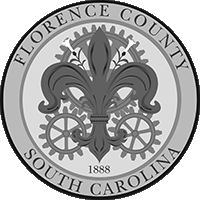

In 1929, Florence native William Henry Johnson met Danish textile artist Holcha Krake. It was a chance encounter which opened a new chapter in Johnson’s life, both personally and artistically.
Johnson’s early artworks often evince his shifting nature, reflecting the influences of well established artists and styles of the time. However, after their marriage in 1930, Holcha became a constant in Johnson’s life.
Holcha’s folk art philosophies were rooted in the past, but were shaped just as much by the progressive thinking of European modernism. By 1940 these principles had become a catalyst for Johnson’s own artistic transformation.
Willie and Holcha presents for the first time, rare rediscovered works by Holcha Krake which have recently been acquired. This exhibition explores the mutual influence between these artists and invites a deeper interpretation of both Johnson and Holcha’s work in the context of their relationship.
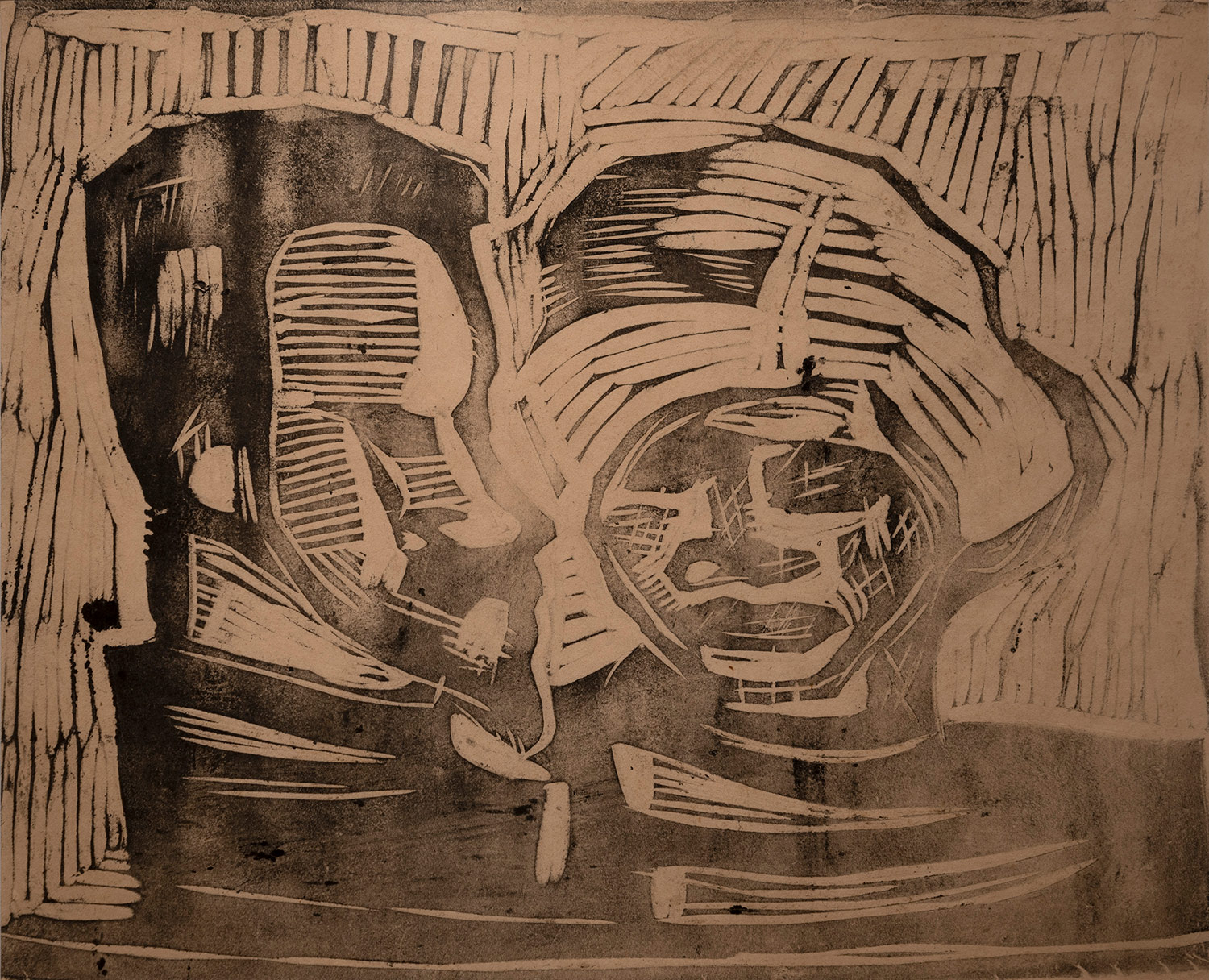
William Henry Johnson
Holcha and Willie (Willie and Holcha)
woodcut print on paper
ca 1935
On loan from Amistad Research Center, New Orleans
In 1935, Holcha took Johnson on a years-long trip to Norway to visit friends and travel the countryside. During this time, Johnson became directly influenced by the print works of artist Edvard Munch, whom he had met in Oslo.
Johnson produced very few self portraits relative to the total number of his known works, and even fewer portraits of Holcha. In this rare print of the artist and his wife, we can clearly see the signs of Johnson’s emerging interest in figurative abstraction. It was a style which eventually became the defining characteristic of Johnson’s mature work.
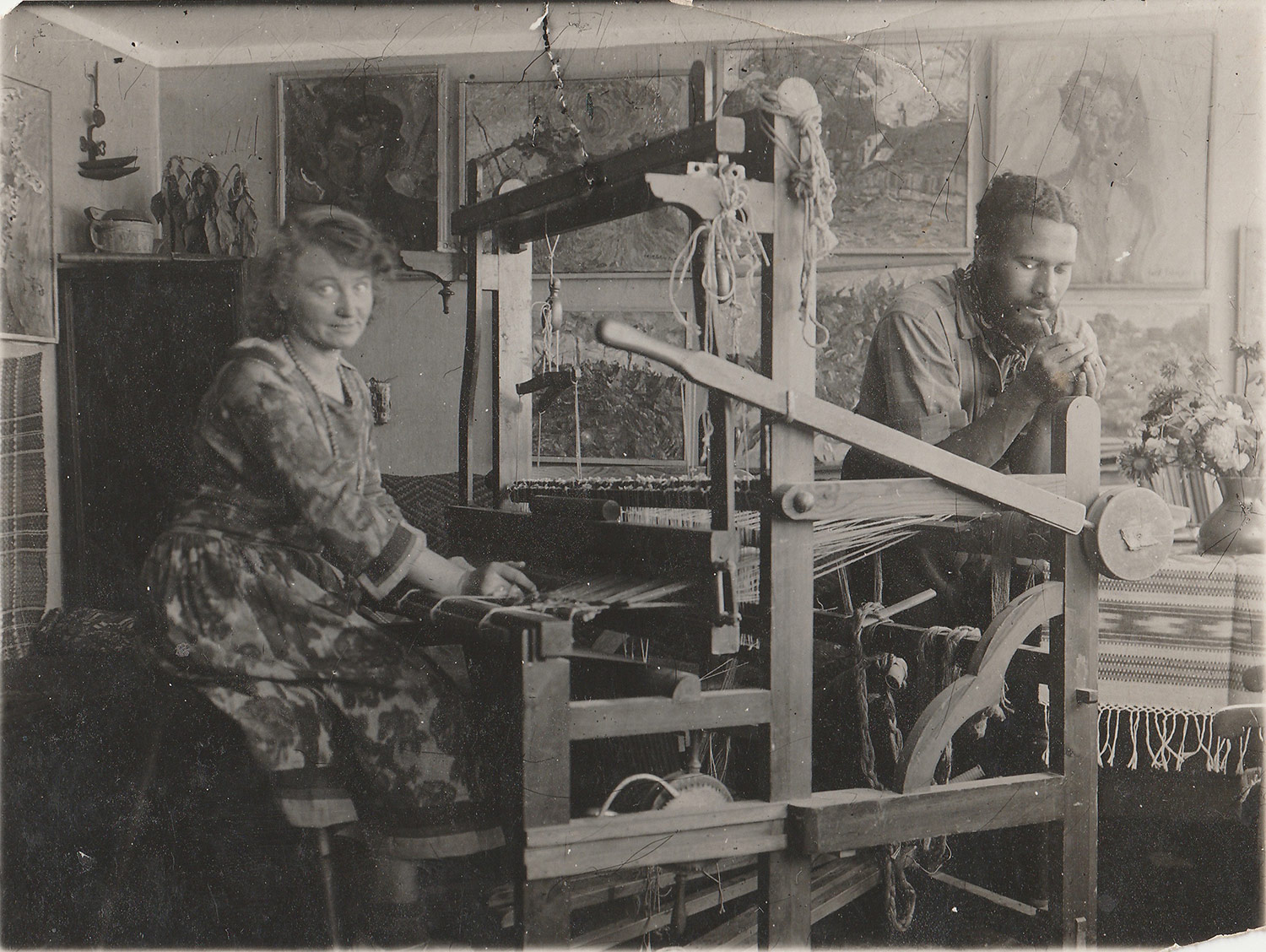
William and Holcha Krake Johnson
ca 1931
This photograph of Holcha and William (or “Willie,” as he was affectionately known) was taken one year after their marriage at their home studio in the Danish fishing village of Kerteminde.
Courtesy, Johanna Voll, Denmark
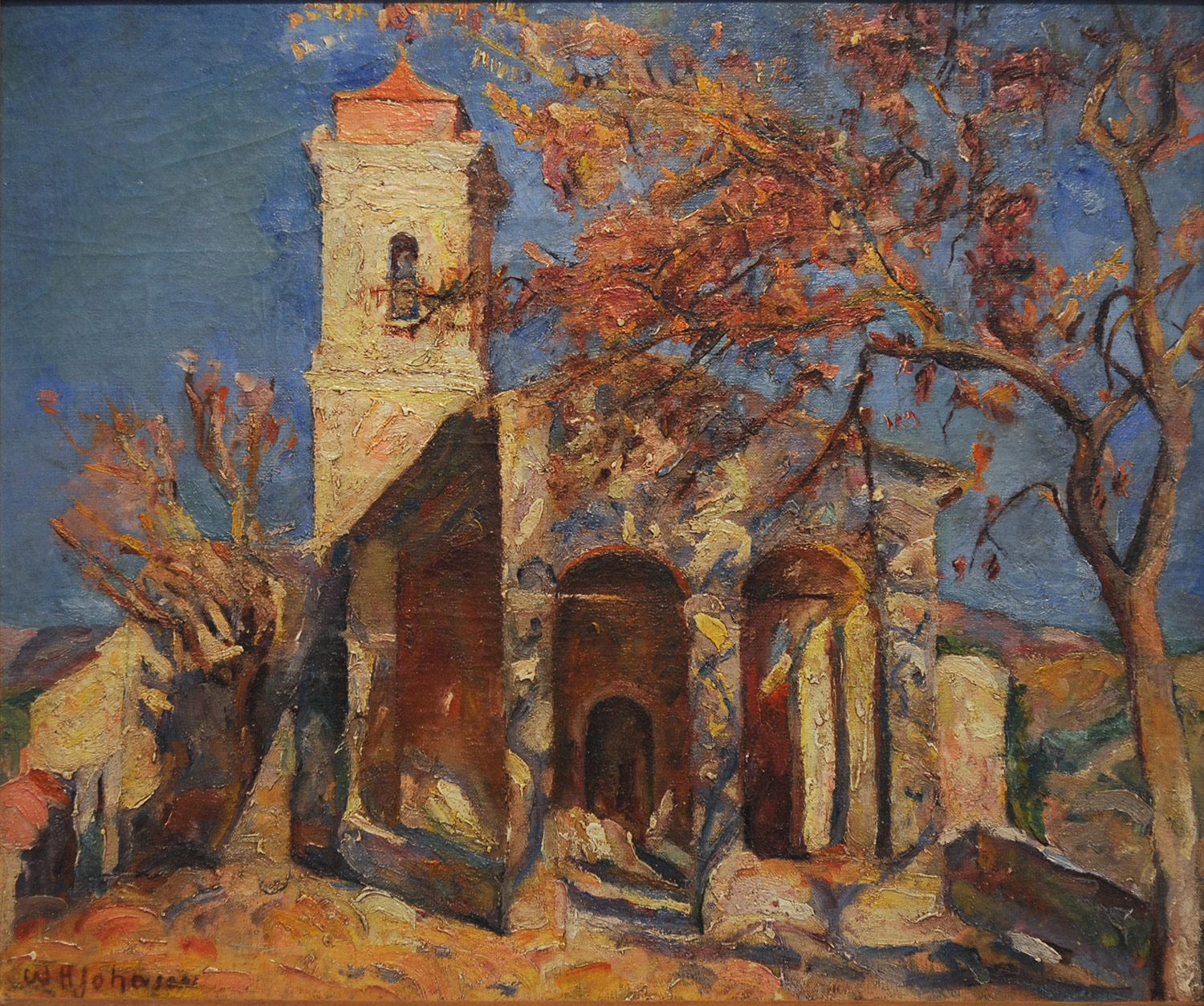
William Henry Johnson
Chapel of Notre Dame de la Protection, Cagnes-sur-Mer
oil on canvas
ca 1928
2011.2.29.1
In January 1928 Johnson traveled to the south of France, settling in the coastal town of Cagnes-sur-Mer, where he created this painting. The vibrant color palette and impastoed surface reflect the predominance of Impressionism in French art at the time.
When Johnson returned to Florence 1930, this painting was included in an exhibition at the Director’s Room of the Atlantic Coast Line Rail Road YMCA on Ravenel Street. Johnson gave the painting and two others to a young YMCA employee by the name of William Haskell Gardner for his help in preparing the exhibit.
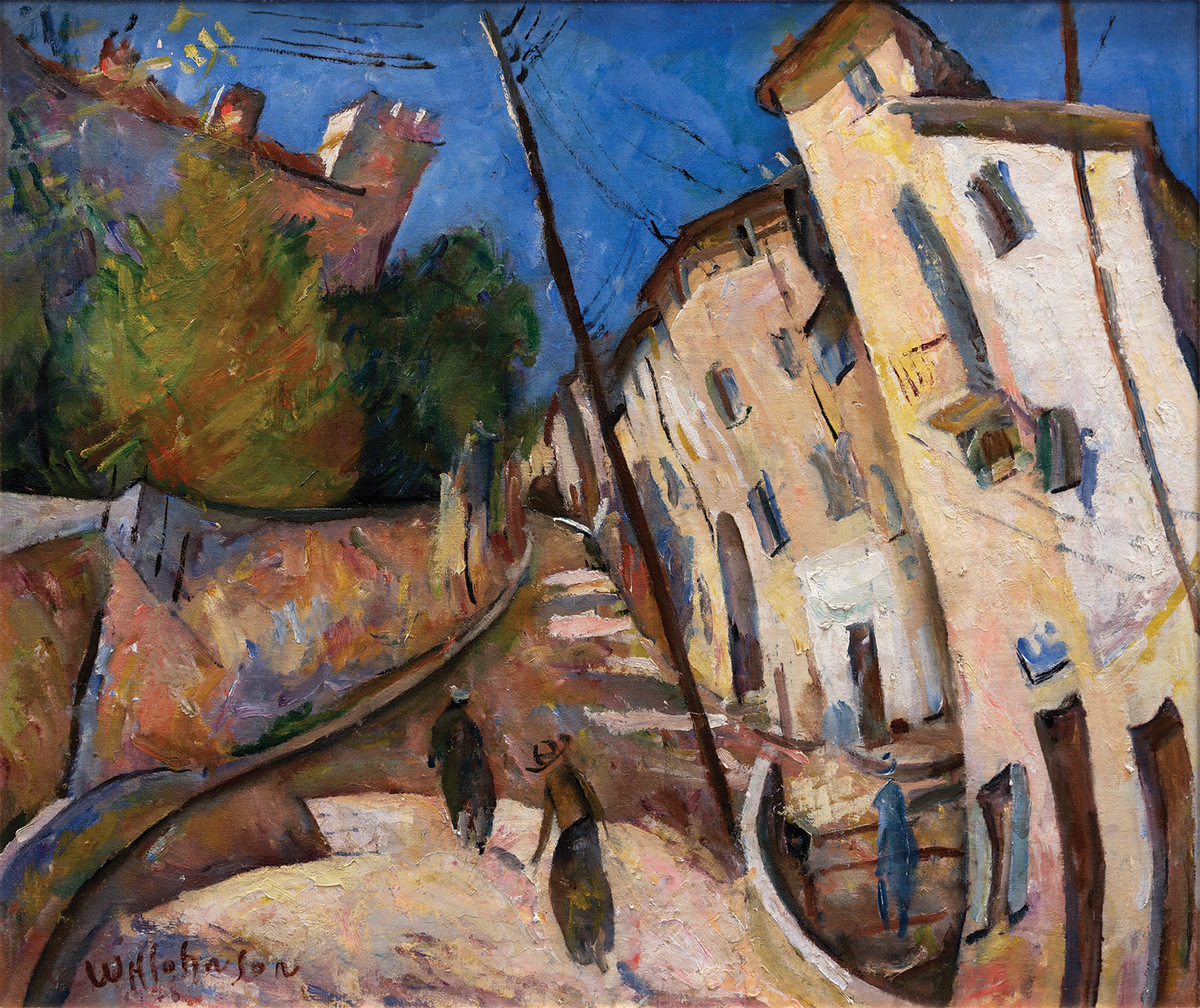
William Henry Johnson
Cagnes-sur-Mer
oil on canvas
ca 1929
Wright Collection of Southern Art
In this painting we can see the effects which began to manifest in Johnson’s paintings after he had spent only a short time in Cagnes-sur-Mer. In a letter to his mentor Charles Hawthorne at the National Academy of Design in 1928, Johnson wrote:
“I am not afraid to exaggerate a contour, a form, or anything that gives more charcter and movement to the canvas.”
After Johnson met Holcha in Cagnes the spring of 1929, his work became even more intensely expressive and modern. A three dimensional reconstruction of this painting can be seen in the exhibition Inside the Paintings: William H. Johnson, currently on view in the museum’s children’s gallery.
William Henry Johnson (1901 – 1970) met Holcha Krake in the southern French town of Cagnes-sur-Mer in the early spring of 1929. Johnson’s work up to that point had been largely academic, following the tenets of his training at New York’s National Academy of Design.
Krake (1885 – 1944) was an artist herself, and had received her training in textile design in Norway, Sweden, as well as in her native country of Denmark. Johnson was attracted to Holcha’s progressive, independent spirit, and joined her on a summer-long tour of Europe. The trip enlarged Johnson’s worldview and inspired a new period of his artistic productivity.
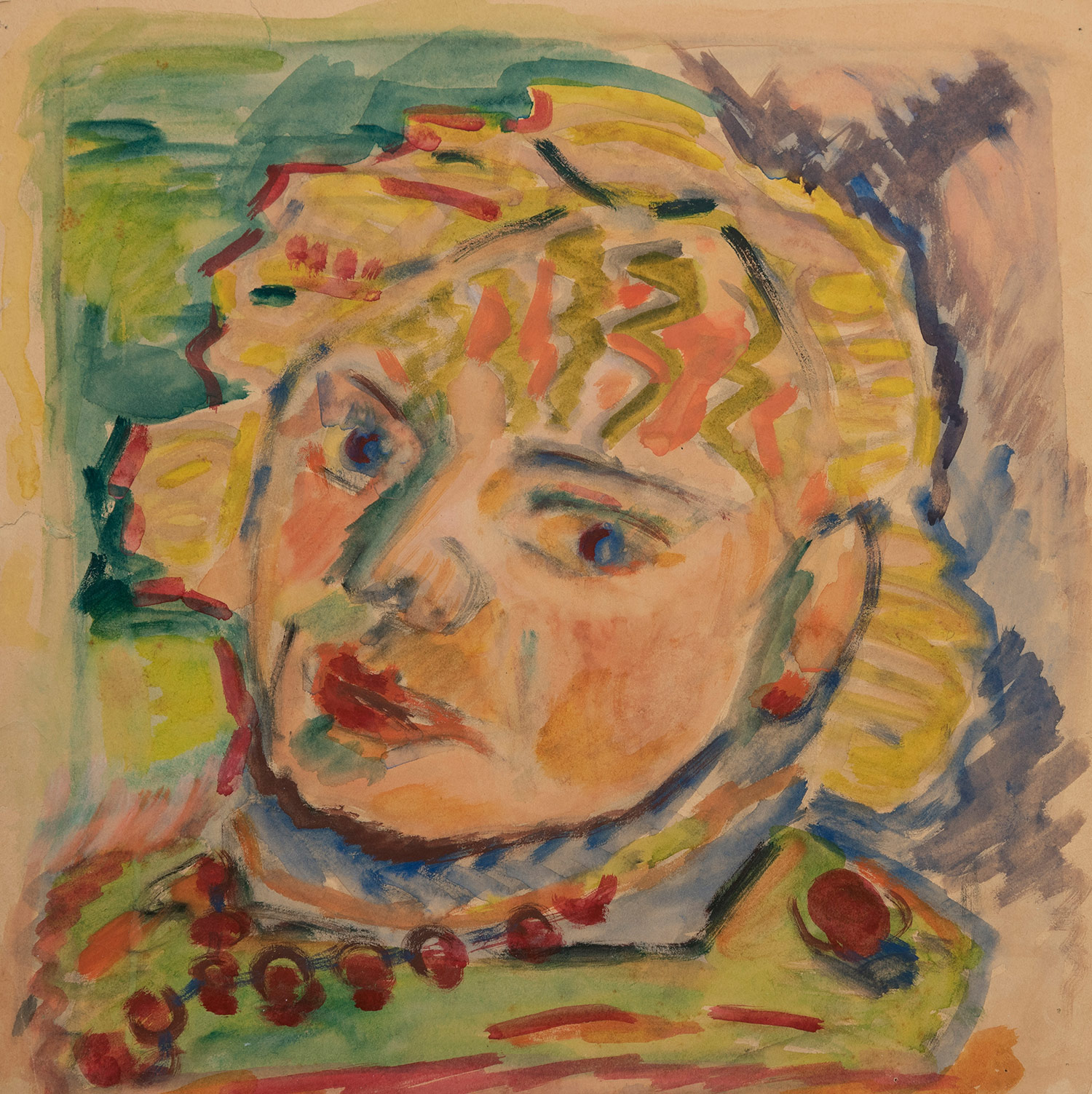
Holcha Krake Johnson
Self Portrait
watercolor on paper
1930s
Voll Collection, Florence County Museum
This self portrait raises the question of mutual artistic influence between husband and wife. Holcha had inspired Johnson’s pursuit of Expressionism. It seems evident in this portrait, that the influence went both ways.
Holcha’s primary artistic interests were in textiles and ceramics, but very few of her artworks have survived to help us understand her as an artist. On the other hand, over 1,000 artworks by her husband have been catalogued in public collections and have been the subject of several books and numerous exhibitions since his death in 1970.
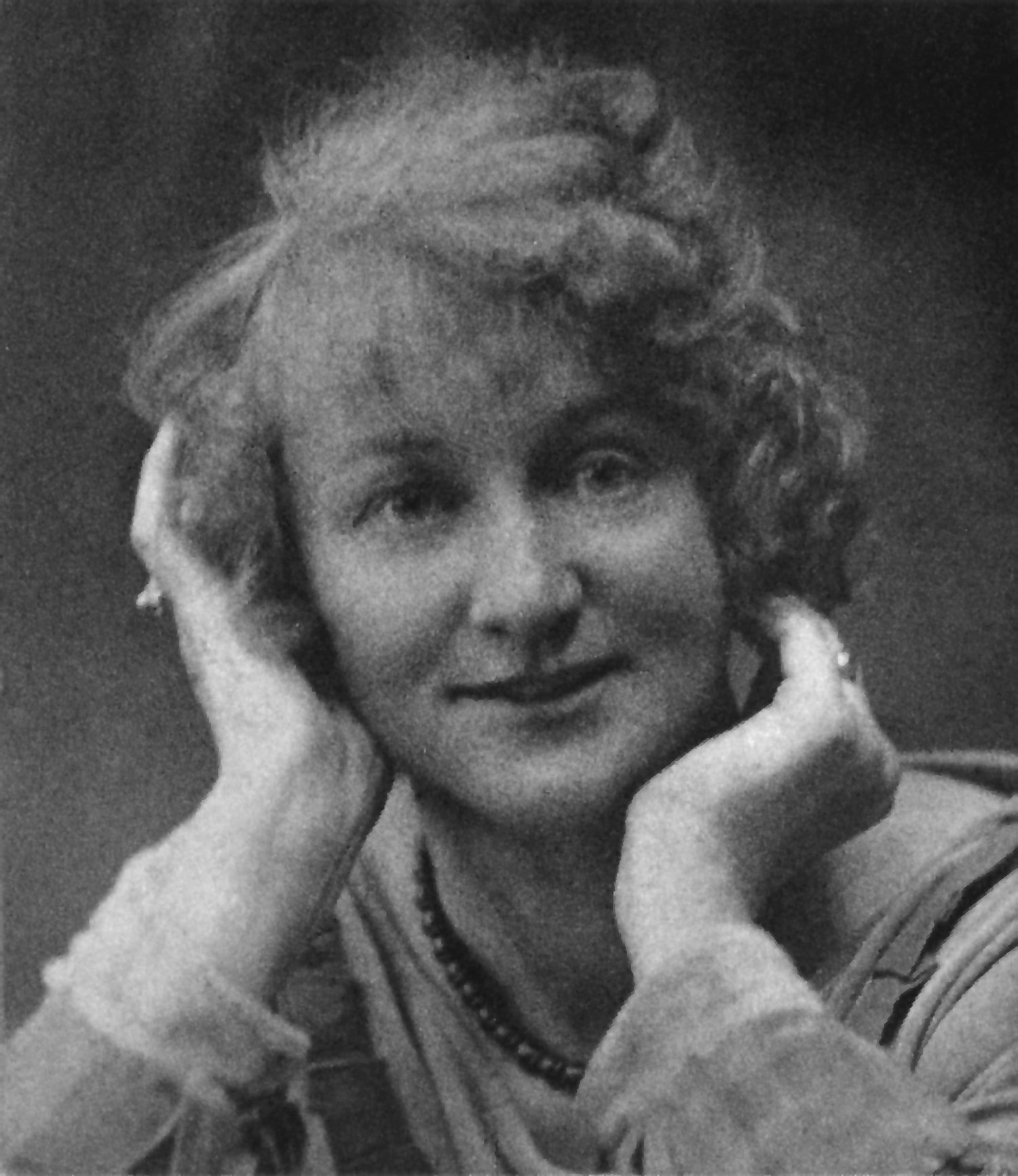
Holcha Krake
ca 1920
This photo was taken around the time Holcha was teaching weaving at a school in the city Askov, Denmark. She was 16 years Johnson’s senior.
Courtesy, Steve Turner Gallery, Los Angeles
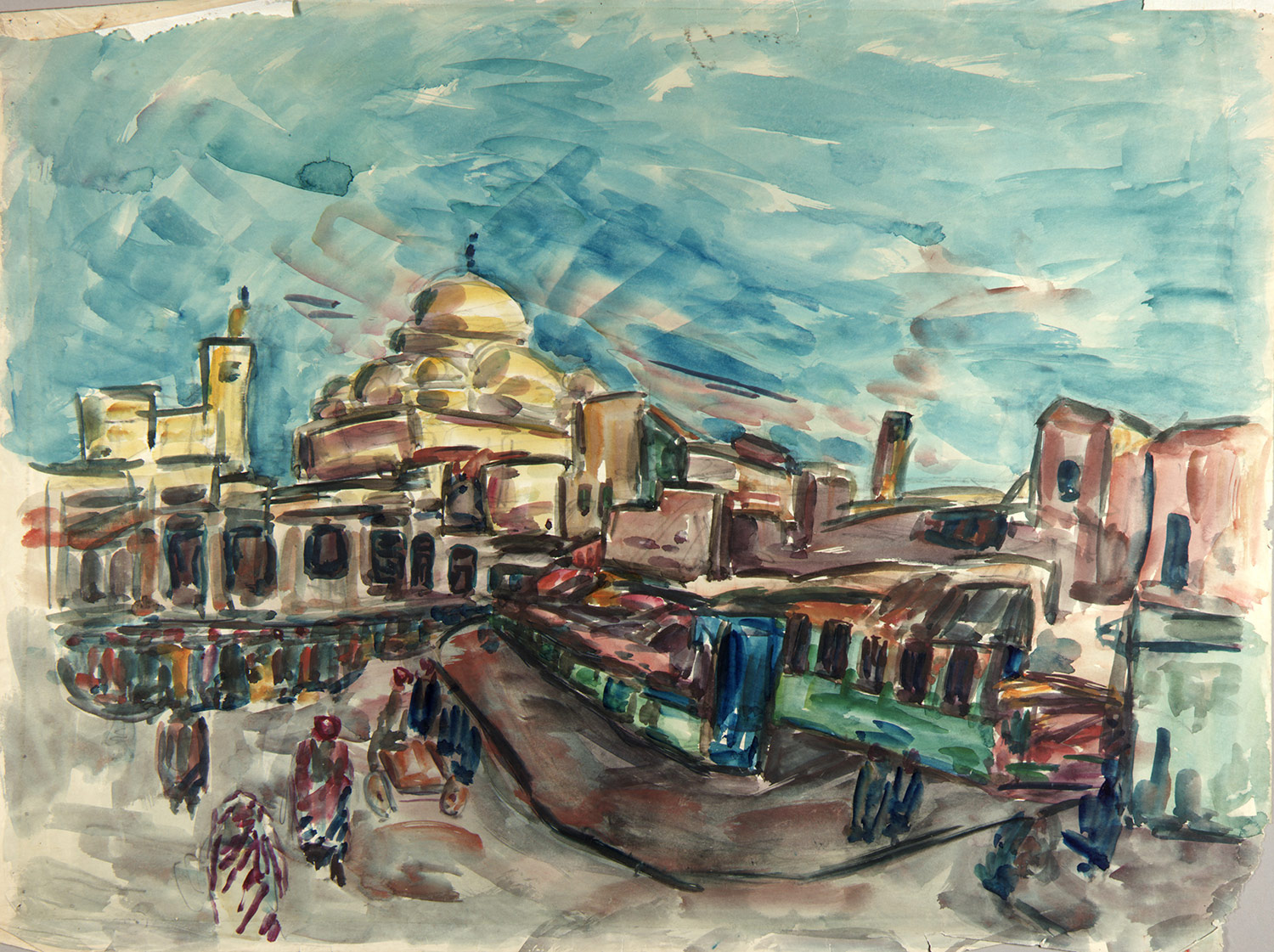
William H. Johnson
Kairouan, Tunisia
watercolor and pencil on paper
1932
Courtesy, Smithsonian American Art Museum
1967.59.859
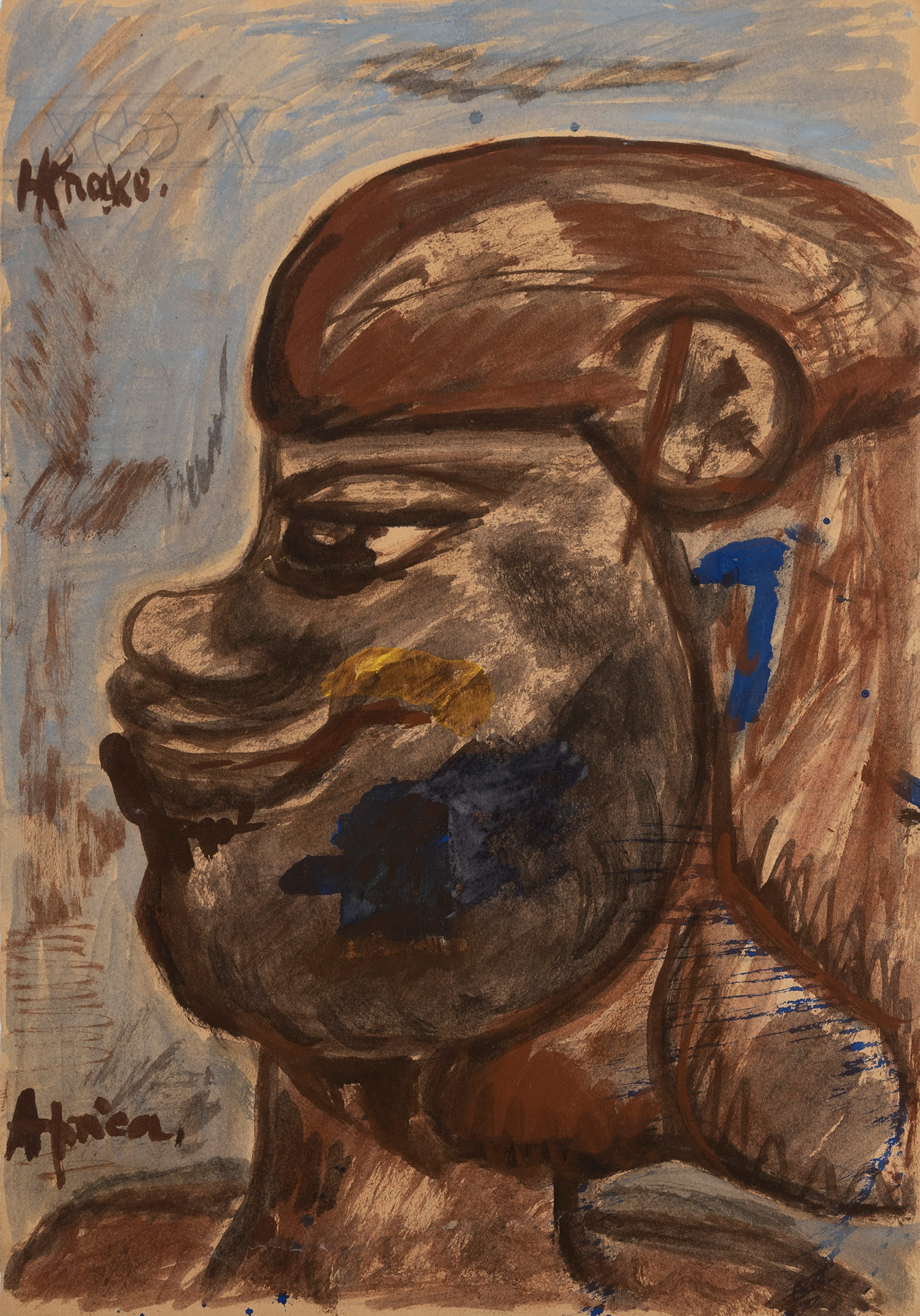
Holcha Krake Johnson
Africa
watercolor on paper
ca 1932
Wright Collection of Southern Art
Johnson and Holcha traveled to Tunisia in the spring of 1932. Holcha had gone into North Africa with an interest in the traditional textiles of the region, but when the couple visited the city of Nabeul, they were introduced to its thriving ceramics market.
Holcha maintained an interest in ceramics for the remainder of her life, often displaying her textiles and pottery together in the same exhibitions along with Johnson’s prints and paintings.
Johnson and Holcha married in Denmark in 1930. It was more than a new home for Johnson, it was a new world. In a way Holcha carried Johnson over the threshold, introducing him to her friends and family, and to an environment which Johnson absorbed and reflected in his highly expressionistic paintings and print works in the early 1930s.
In 1935, the two artists went to Norway. They lived and traveled throughout the country for several years, creating and exhibiting new work together. Holcha began to produce her most ambitious weaving project, and Johnson turned to painting scenes of the dramatic Nordic landscape.
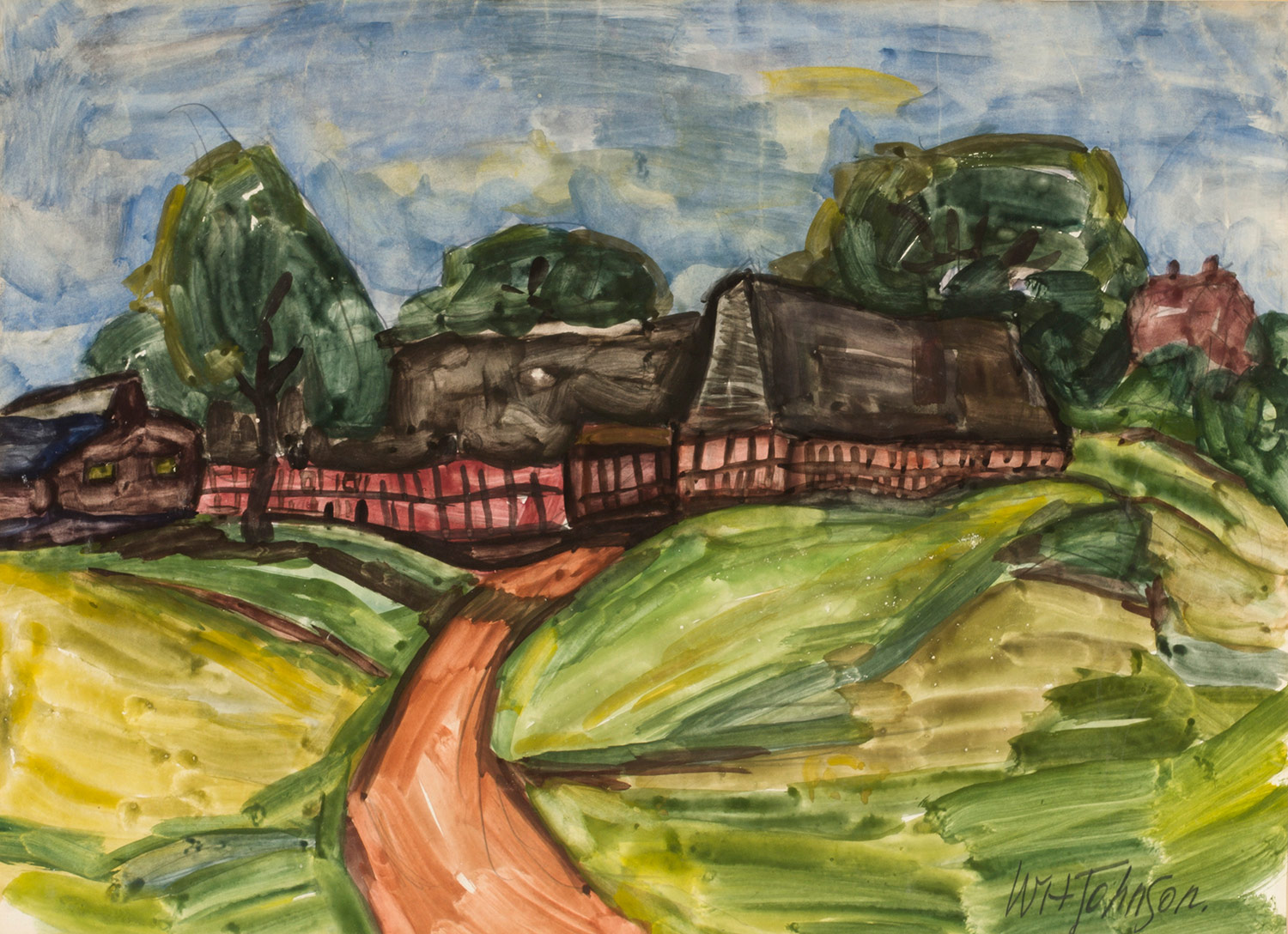
William H. Johnson
The Red Road
watercolor and pencil on paper
ca 1930 – 1932
Courtesy, Smithsonian American Art Museum
1967.59.788
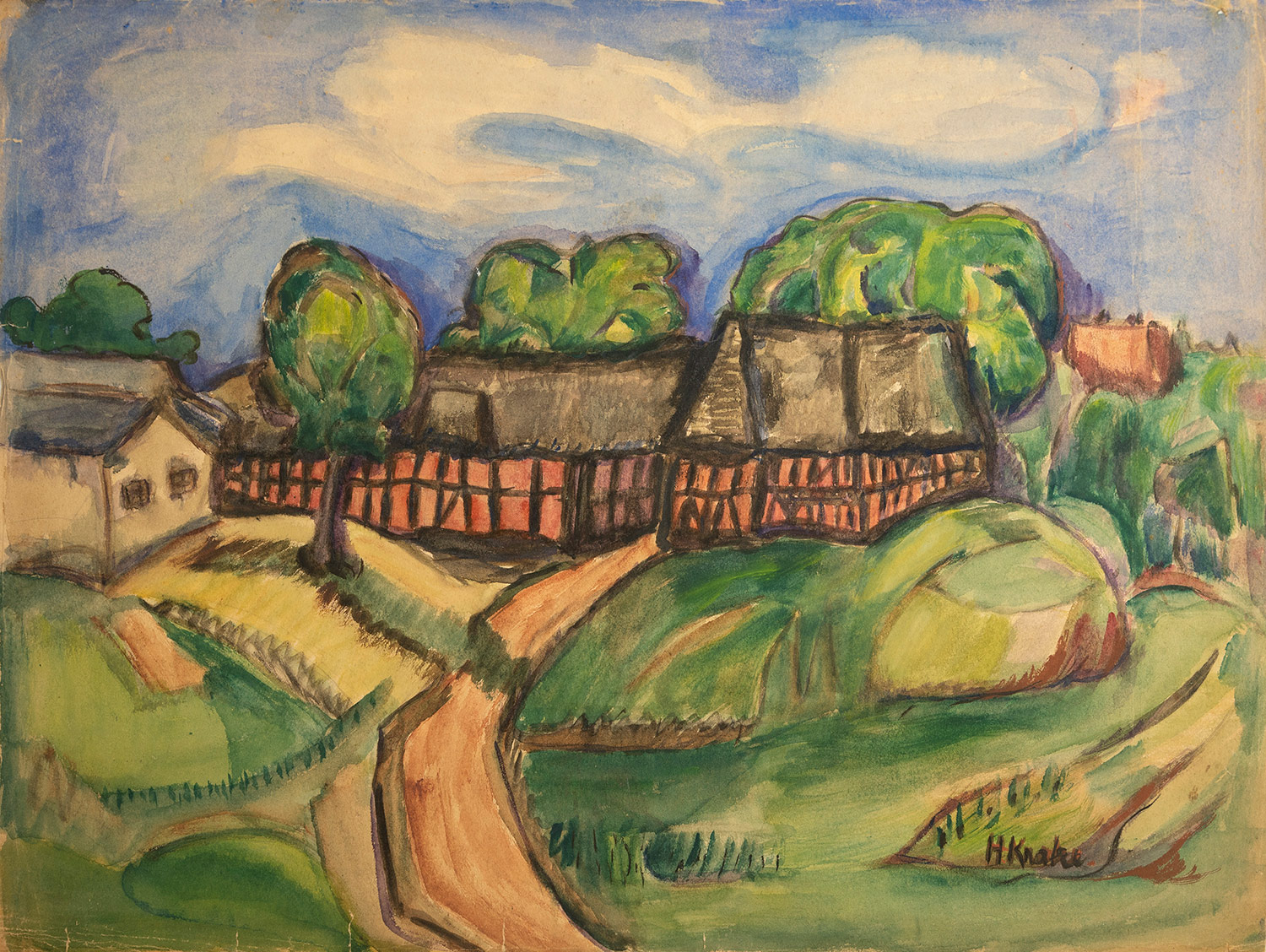
Holcha Krake Johnson
Red Farm House
watercolor on paper
early 1930s
Wright Collection of Southern Art
The style and media of this watercolor by Holcha Krake is nearly identical to Johnson’s of the same subject. According to accounts of their life, Johnson and Holcha were inseparable at times. It would therefore make sense that Holcha created this painting at the same time Johnson made his.
The subject of this painting could be what is now known as the Funen Village open air museum, in the town of Odense, Denmark, which is near William and Holcha’s former home.
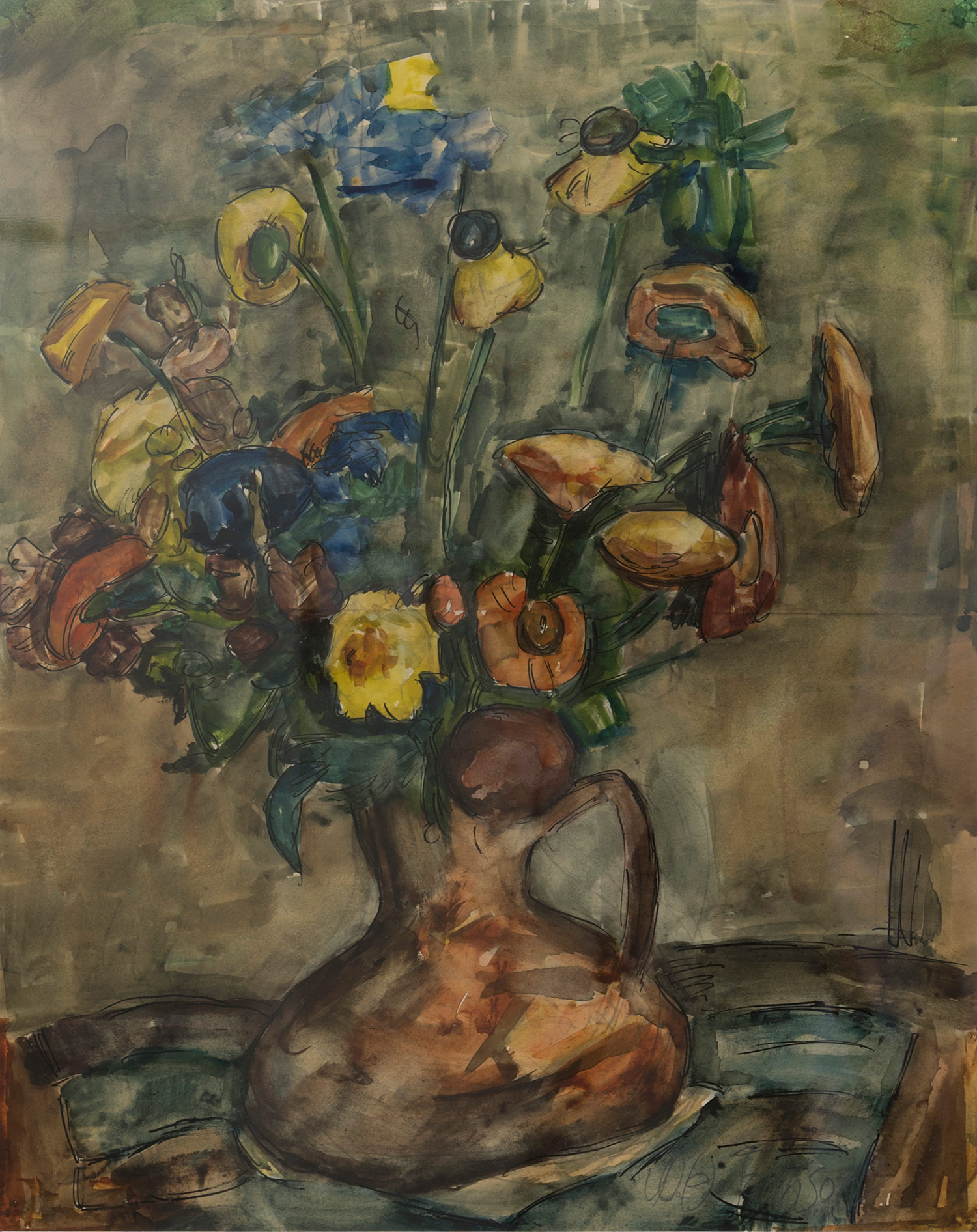
William Henry Johnson
Untitled, Still Life with Flowers
watercolor and pencil on paper
ca early 1930s
Borrell Collection, Florence County Museum
This watercolor painting bears striking similarities to Holcha’s floral still life not just in media and subject matter, but in style.
One may also notice that the vase and flowers are almost identical to those on the table at the far right of the photograph of William and Holcha in their studio in Kerteminde.
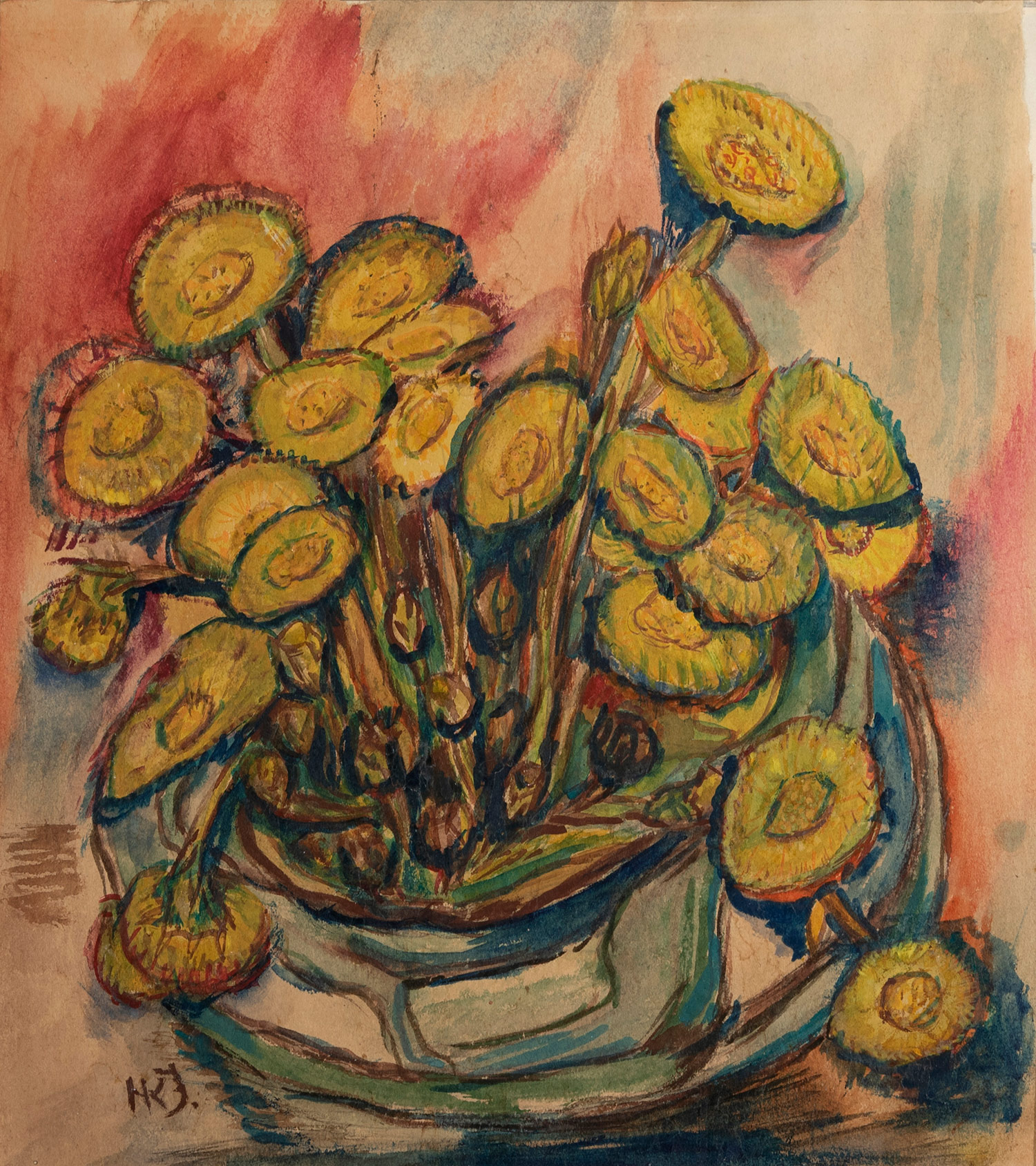
Holcha Krake Johnson
Still Life with Yellow Flowers
watercolor on paper
ca early 1930s
Wright Collection of Southern Art
William and Holcha kept a garden on the grounds of their home in Kertiminde. It is likely that Holcha cultivated some flowers and other plants for their usefulness in creating dyes for her textiles.
The comparability of this small painting to Johnson’s still life reinforces the hypothesis that Holcha and Johnson were sharing artistic ideas on equal terms, neither being the creative dominant.
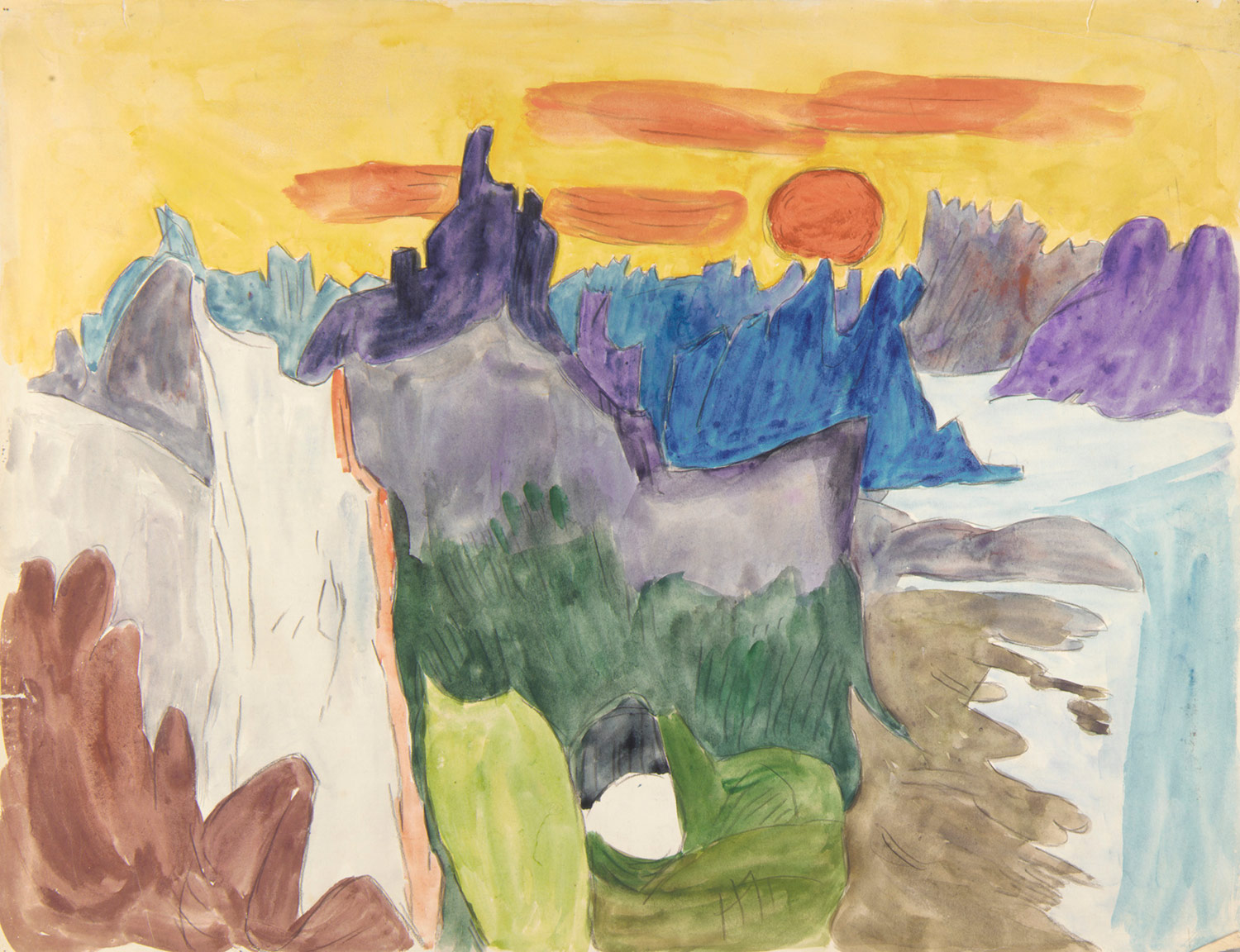
William Henry Johnson
Lofoten, Norway – Midnight Sun
watercolor on paper
ca 1937
Courtesy, Smithsonian American Art Museum
1967.59.59
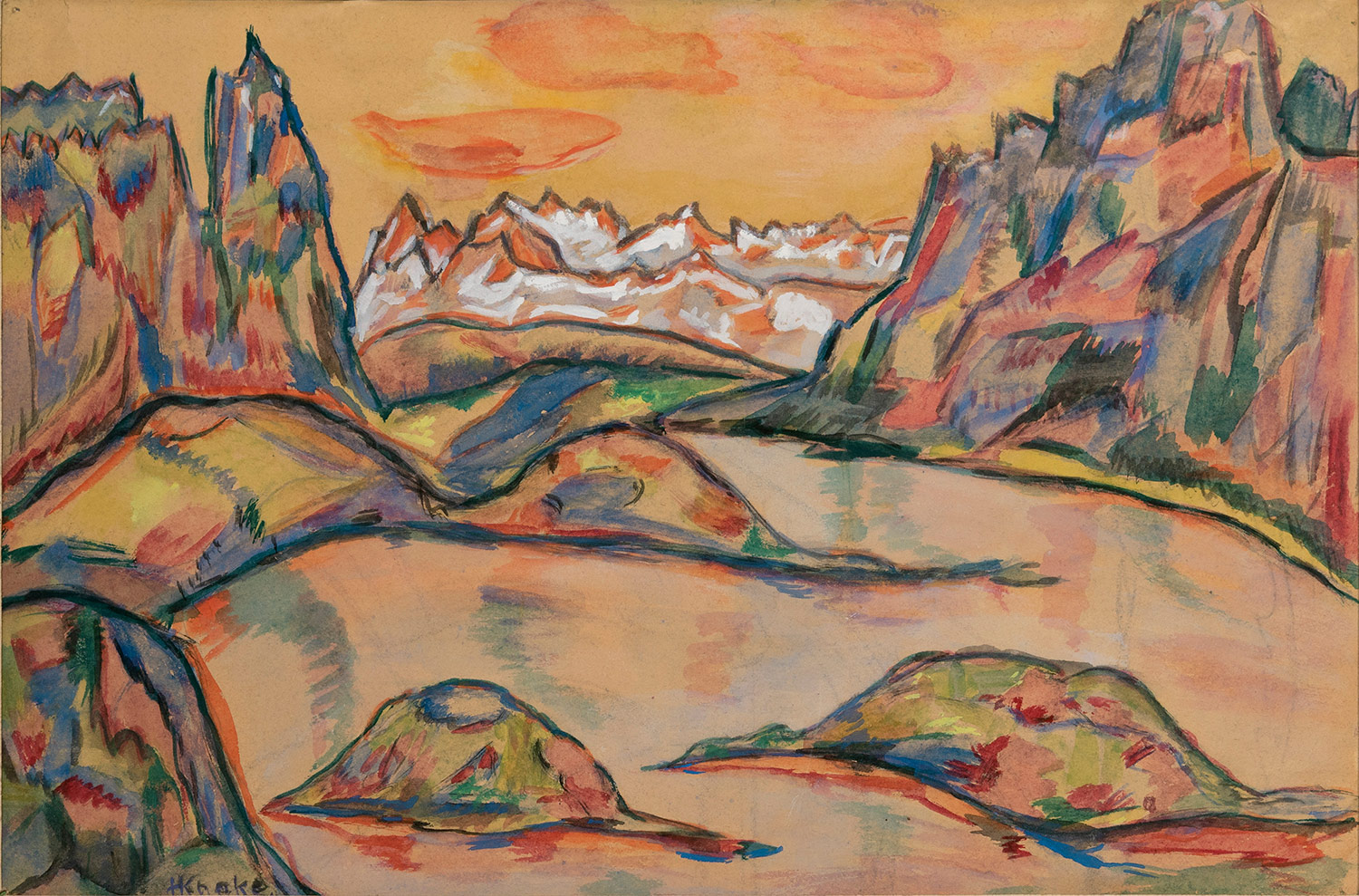
Holcha Krake
Midnight Sun
watercolor on paper
ca 1937
Voll Collection, Florence County Museum
The area of Lofoten, Norway, is known for its incredibly dramatic landscape of jagged cliffs and fjords. Both Holcha and Johnson were highly inspired by its natural beauty and produced numerous sketches and paintings during their travels there.
In November of 1940, the American Fine Arts Society hosted a funsraising sale to stimulate interest in collecting local art. The registration tag for Holcha’s entry can still be found on the reverse of this small watercolor.
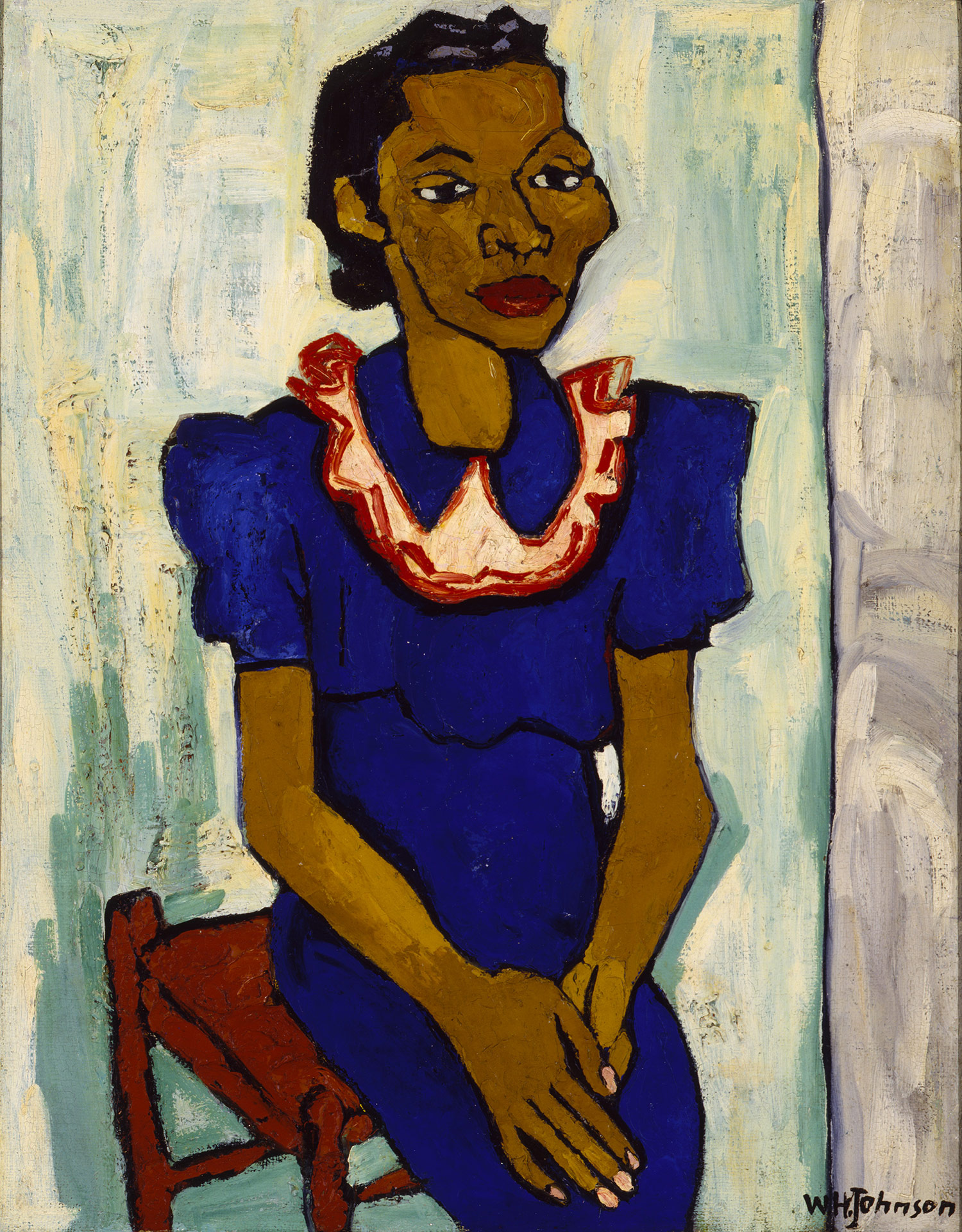
William Henry Johnson
Lucy
oil on burlap
ca 1939
Courtesy, Smithsonian American Art Museum
1967.59.1117
When Johnson returned with Holcha to the United States in 1938, they had little money and no work. In May of 1939 however, Johnson was able to get a teaching job at the Harlem Community Art Center in New York.
Johnson used the readily available supply of models at the school to initiate a series of portraits using a bold new style of colorful abstraction. These works were the stepping stone for his later paintings of Southern African Americans which he is best known for today.
Out of fear for World War II’s expanding threat in Western Europe, Holcha and Johnson left Scandinavia for New York in 1938. Johnson found a job through the Federal Arts Project, teaching art at the Harlem Community Arts Center. There, Johnson became acquainted with many of the artists associated with the Harlem Renaissance.
Johnson’s work underwent two significant transformations during this time. He began to focus on African American subjects and experimented with a bold new style of figurative abstraction. Sadly, Holcha was diagnosed with breast cancer in 1943 and died shortly afterward. Her sudden death left Johnson stricken with grief. Only three years later Johnson himself was diagnosed with a debilitating illness which confined him to a hospital for the last twenty-two years of his life.
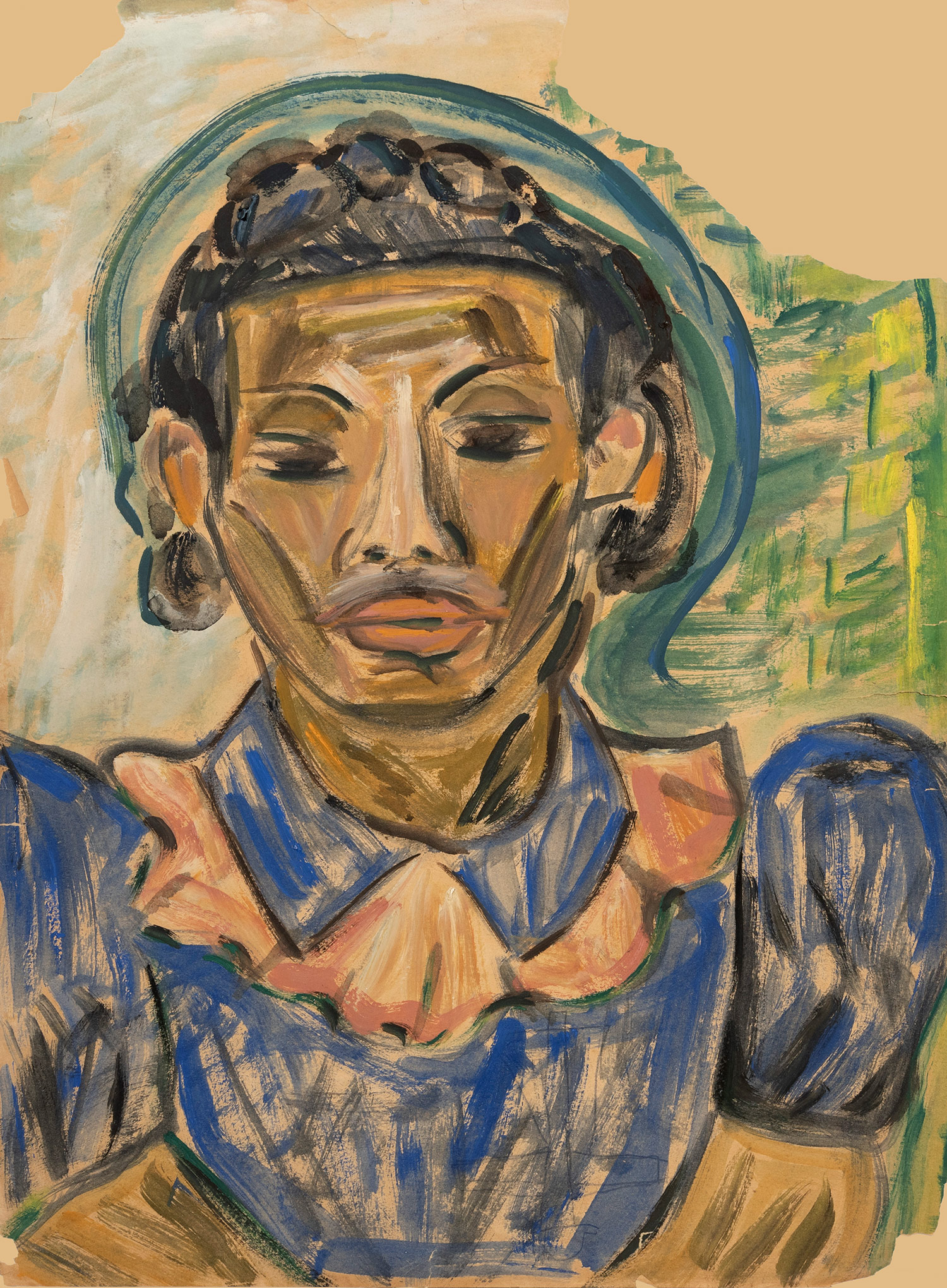
Holcha Krake Johnson
Untitled, Woman in Blue Dress
watercolor on paper
ca 1939
Wright Collection of Southern Art
This painting again suggests that the apparent similarities between Johnson and Holcha’s work cannot be attributed to one artist copying another, but that husband and wife were often working directly side-by-side.
Both Johnson and Holcha’s paintings were most likely created at the Harlem Community Art Center. As evidenced by the light pencil drawing of an airplane (lower center), Holcha used a sheet of paper from an incomplete student drawing to make this sketch of a woman in a blue dress.
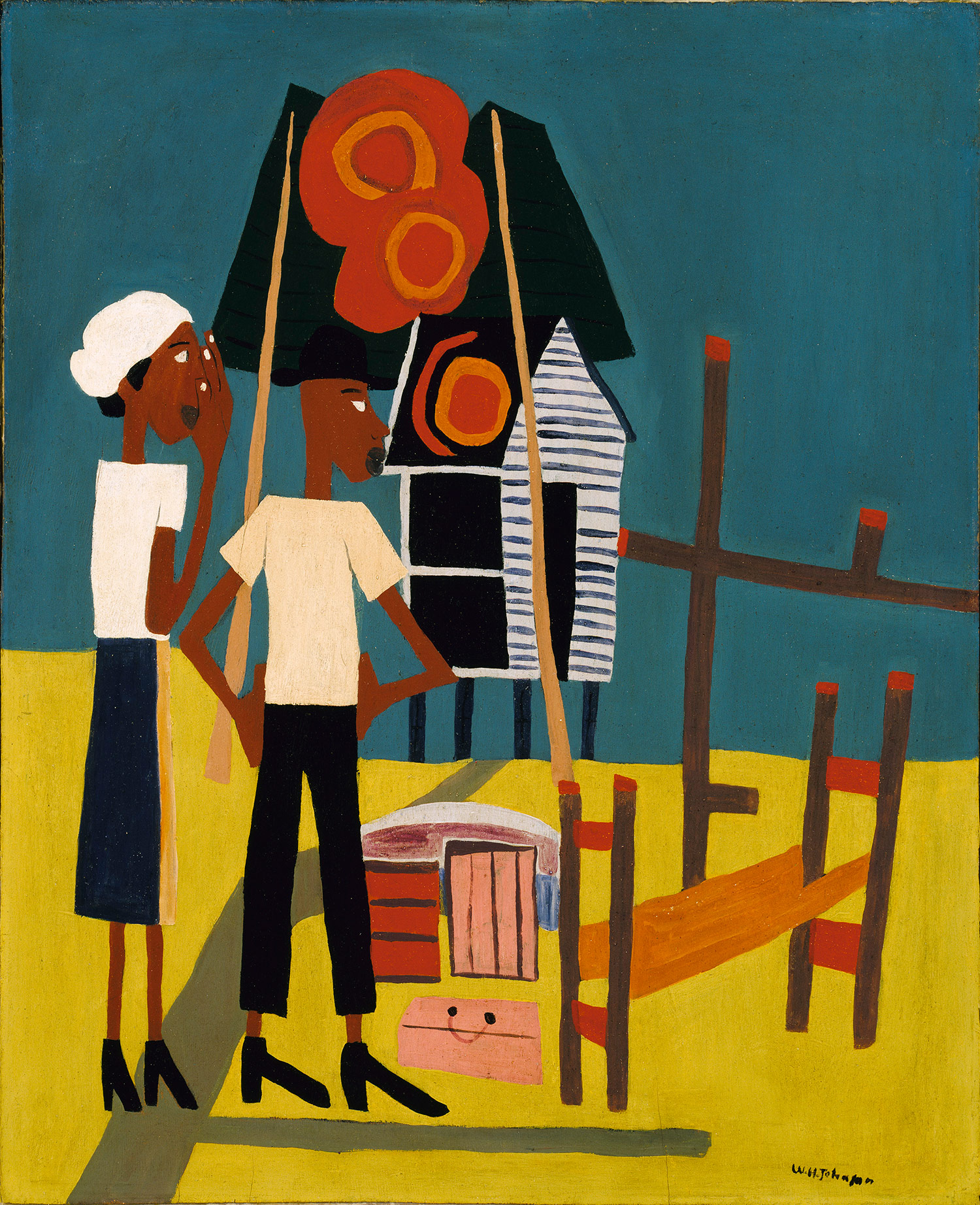
Willam H. Johnson
Burned Out
oil on wood
ca 1943
Courtesy, Smithsonian American Art Museum
1967.59.610
In December of 1942, William and Holcha’s Greenwich Village apartment building caught on fire. Many of their artworks were destroyed, and the couple lived for the next several months in the homes of other artists and friends.
Like Up With the Sun, also exhibited here, Johnson may have been transposing the real events of his life in New York into his new paintings of African Americans in the South.
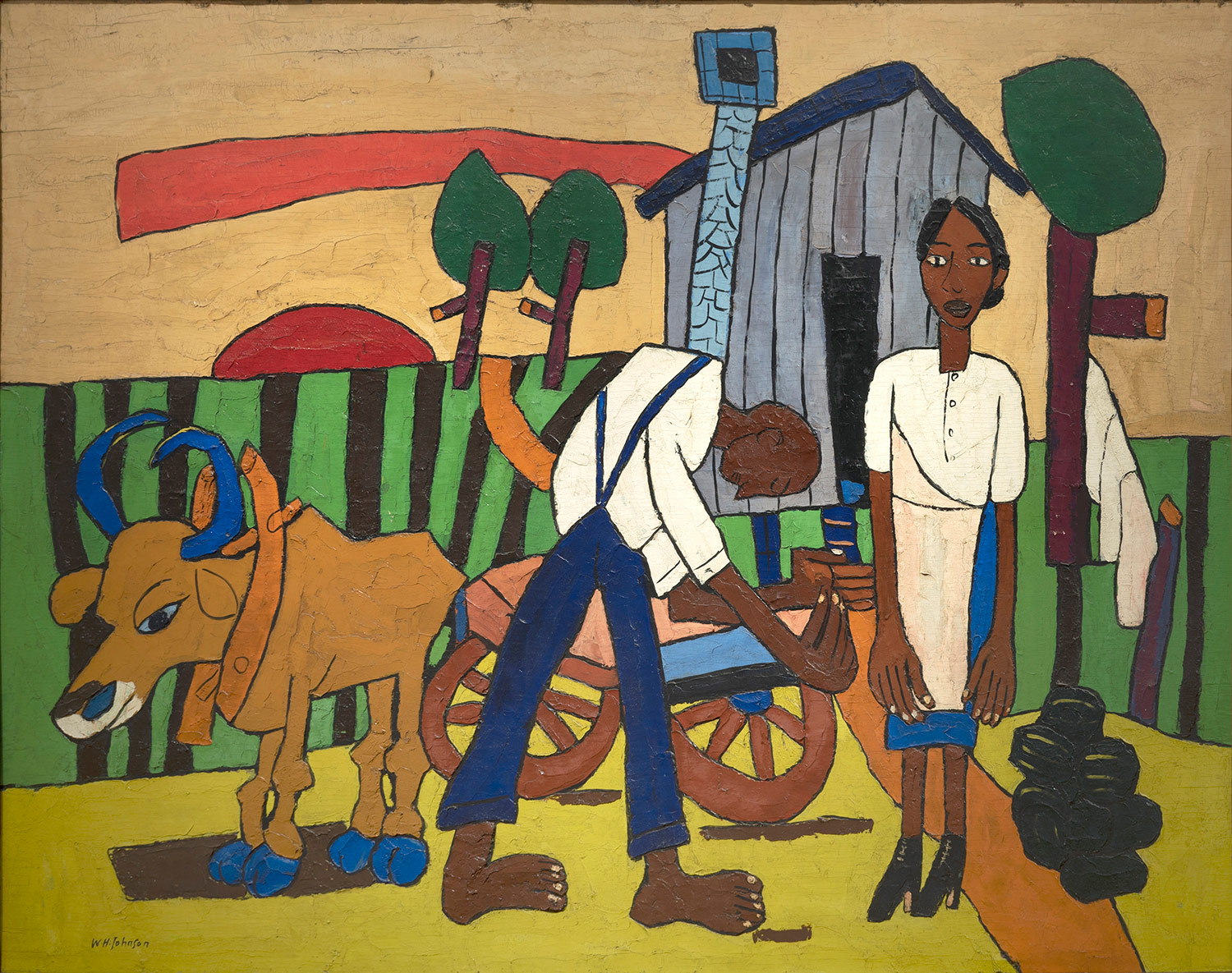
William H. Johnson
Up with the Sun
oil on plywood
ca 1941
On loan from the family of John Frank
This artwork exemplifies Johnson’s early scenes of Southern narrative subject matter. The figures and landscape are abstracted and simplified, the color palette is bright, and the paint is heavily applied.
The painting almost certainly belongs to the series of works Johnson created in 1941. It was acquired by Mrs. Pauline Klein of New York, whose name appears in the guestbook of Johnson’s breakthrough exhibition at the Alma Reed Gallery in April of that year. In the 1950s Mrs. Klein gave the painting to the family of its current owner.
The Florence County Museum is grateful to the Frank family for their loan of this significant artwork.
Although Johnson’s work in New York at first reflected his urban surroundings, it soon evolved into a new narrative style which incorporated Holcha’s folk art philosophies into paintings depicting rural African American life in the South.
In the same way that Holcha had introduced Johnson to a new life in Denmark, Johnson had introduced Holcha to the unfamiliar world of America in 1938. In this painting Johnson may be symbolically representing this turning point in their lives, as it shows a man bowing reverently to his wife, apparently helping her onto (or off of) an ox cart for a journey.






